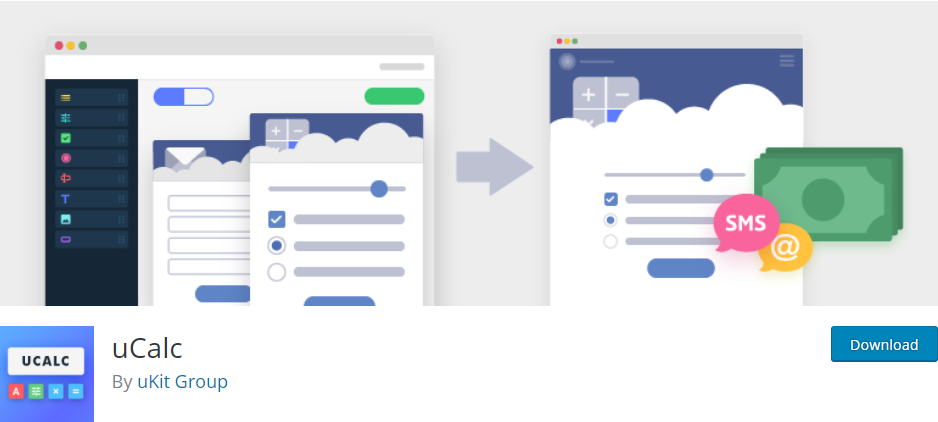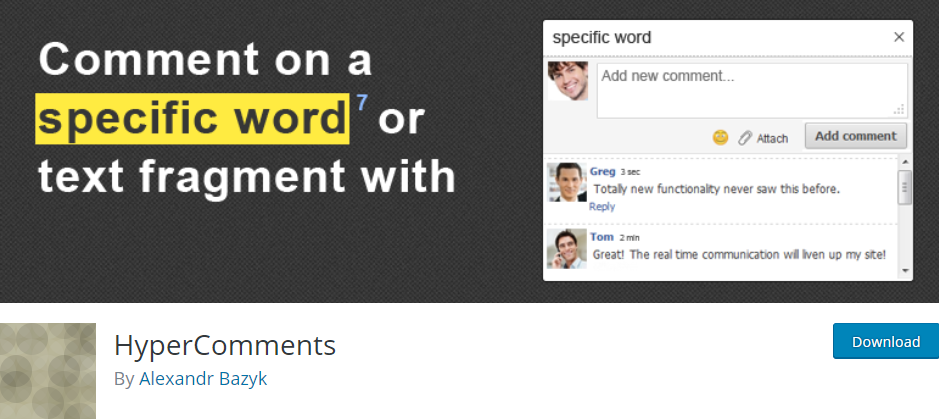5 WordPress Plugins Perfect For Any E-Commerce Website
To make your website work for your business you need to be constantly improving its design and usability, create additional touchpoints for your business and your audience, test new solutions for increasing conversion, pay attention to the search optimization of a website and involve with interesting content.
Every task demands time management, that is why we compiled some really cool plugins and extensions from WordPress official catalog, that are going to save your precious time and that are going to be useful, and that can even be used simultaneously.
1. Elementor Page Builder

You have set up analytics and came to the conclusion that a visual representation of the page doesn’t exactly satisfy business and visitors’ demands. You already know what exactly needs to be changed and you would want to regularly make changes to the page – add new widgets to the page, change the structure of the main page and create new landings for different events, promos, and products.
This task can be fulfilled by using the plugin that replicates the functionality of a page-builder. Making changes with it is going to be even easier than with the default WordPress editor or premium themes’ in-built page-builders.
Elementor Page Builder – is one of the most popular visual page builders for WordPress and already has more than a hundred thousand active users. The plugin completely replaces the default WordPress page builder. You just go to Elementor and create a page – add sections, titles, images, buttons, maps, sliders and other elements by just dragging them with a mouse to a needed place.
There are also additional settings for each and every element – size, color, alignment, and others. And by choosing the Elementor Canvas option you can create separate pages that can a design independent of the main theme. All the pages are responsive and you can check out the way they will look on tablet and mobile devices.
The basic version of the plugin has 28 of its own elements, other 15 are the default WordPress widgets. Plugin’s functionality can be expanded by installing the Press Elements extension, it’s going to broaden the header options, logo and elements on the blog page in case you have one.
All of that is enough for to:
– create modern landing pages;
– make blog posts look stylish;
– customize the whole website;
The page builder allows working with themes and plugins. If you install the extensions that add elements to the page, the page-builder control panel will have a corresponding button. However, if a WordPress theme already has a built-in page builder you will have to switch between it and the Elementor because the plugin doesn’t recognize the “native” blocks.
Plugin’s free version is not limited by time but it doesn’t have all the widgets and templates. If the basic functionality is not enough you can choose one of the three plans with an annual payment. Besides additional elements, the paid version includes tech support and receiving updates.
2. uCalc – Calculator and Forms Constructor

In lots of business spheres it’s not always possible to give customers the exact price information, but the visitors, most of the time, prefer to know ahead what the price of a product or service is going to be. And if they can’t get it they might as well leave for another website.
uCalc is a universal tool that doesn’t only work on WordPress. This widget can be inserted into any website, app, messenger or email. It’s going to be especially useful for the pages with products and services which price changes depending on measurements and conditions: value, weight, value discounts, spacing or clients wishes.
A calculator might at first seem to be a simple and unnecessary tool, but in reality, it brings a lot of use to the website: it can be placed on pages created for long-tail queries to attract additional traffic and increase behavioral factors. And if the visitors are not ready to make an order, he can receive the estimation on his email and you will get a warm lead and will be able to give your visitor a reminder.
The plugin can be downloaded and installed through a WordPress dashboard and to paste or remove the calculator from the page you just simply have to choose the needed element from the widget list. The calculator itself is created on the official web page of this service by dragging the ready-made elements – lists, images, buttons, text fields etc. You don’t need any special JS, HTML and CSS skills and to make a process go quicker you can use the calculator patterns and popular searches.
Besides the set of fields and forms, uCalc contains tools that allow creating a calculator that is going to comply perfectly with the needs and the concept of your business. In the “Design ” section you can change fonts, their colors, backgrounds and buttons, and in the “Formula” section you can set the parameters for estimating the prices, including, the output of several estimations and their changes depending on different factors.
Besides that constructor allows to:
– set up payments through PayPal;
– accept orders on the phone or email;
– automatically inform customers through email or messages;
– monitor channels that bring the most orders in your Google Analytics account;
The plugin has a free version but it doesn’t have a range of useful business functions – message notifications, image widget, statistics set up and a goal. The price of its “All Inclusive” plan starts from 2.5$ to 5$ per month depending on the payment period. When the payment period ends, calculators will stay on your website but you will have to expand the payment to use business options.
3. Image Inject Plugin for Choosing the Pictures

Surfing through dozens of websites to choose that very picture that will compliment your text in the best possible way can be such a tiring thing to do.
Image Inject allows finding an illustration to your posts from the WordPress dashboard. After the installation and activation, the default page editor will have a field where you can enter your search query and copy the page title by simply clicking “Copy Title”.
The plugin will select the images that fit the search query the most from the Pixabay and Flickr sources that contain more than 2 million images and will help to set up the size and alignment the image before publishing it.
No need to set up or adjust the plugin, you can get right to work after its installation. However, the advanced users can reduce the search zone by choosing the license, the order of image display and other parameters in the plugin settings. Even though all the images in the stocks are available for free us: and if there will be a necessity to credit the author, the system will automatically add it. Besides that, the system adds attributes for search optimization by default to every image.
4. HyperComments Plugin

Comments are a vital part of a company’s website if you write a blog and deal with content marketing. They give an additional touchpoint for contacting with your audience, attract additional traffic, allow visitors express their opinions and give the company a chance to show their expertise.
HyperComments replaces the default WordPress module with a more functional one: it becomes easier for the admin to moderate comments – accept them, send them to spam or delete them in one click.
After installation of the plugin, you will see a new section in the dashboard where all the comments will be displayed. They can be instantly answered. Other interesting options are also available:
– closing the post comments in a certain time after publishing the post;
– subscribing to comments for users;
– antispam and IP blocking;
-ability to comment a certain paragraph of a text;
5. Mailing service MailChimp

The right Internet marketing allows to increase the involvement the loyalty of the audience and therefore, you are able to sell more. At the same time, it’s sometimes quite complicated to compose business letters and segmenting users’ contacts.
MailChimp is one of the most popular solutions for building a base of e-mail subscribers and creating a newsletter.
To make integration of the plugin with the website easier, the developers of the project created the official plugin that automatically gathers the contacts form subscription forms and distort it into the corresponding categories of the base.
After installing the plugin you will see the new section in the WordPress dashboard and to make it work properly you need to synch the plugin with an official MailChimp account.
To sum things up, an e-commerce website can and should stay modern and functional. And it should definitely leave you a time for an actual business itself. Having chosen simple and easy-to-use plugins you can achieve both creating a unique landing page with Elementor, gather leads and work on the website’s SEO with a uCalc plugin, keep your audience interested with the help of a MailChimp newsletter and simplify your work on the blog with Image Inject and HyperComments plugins.





Leave a Reply
Want to join the discussion?Feel free to contribute!